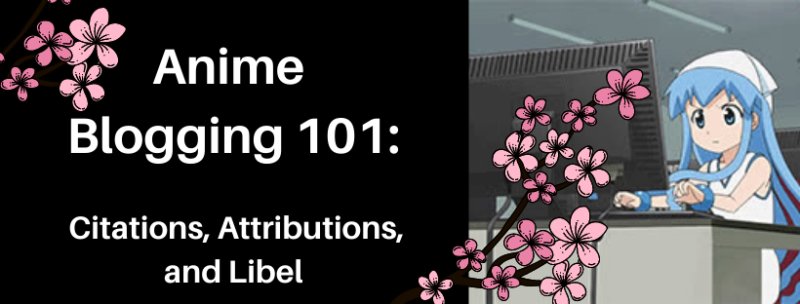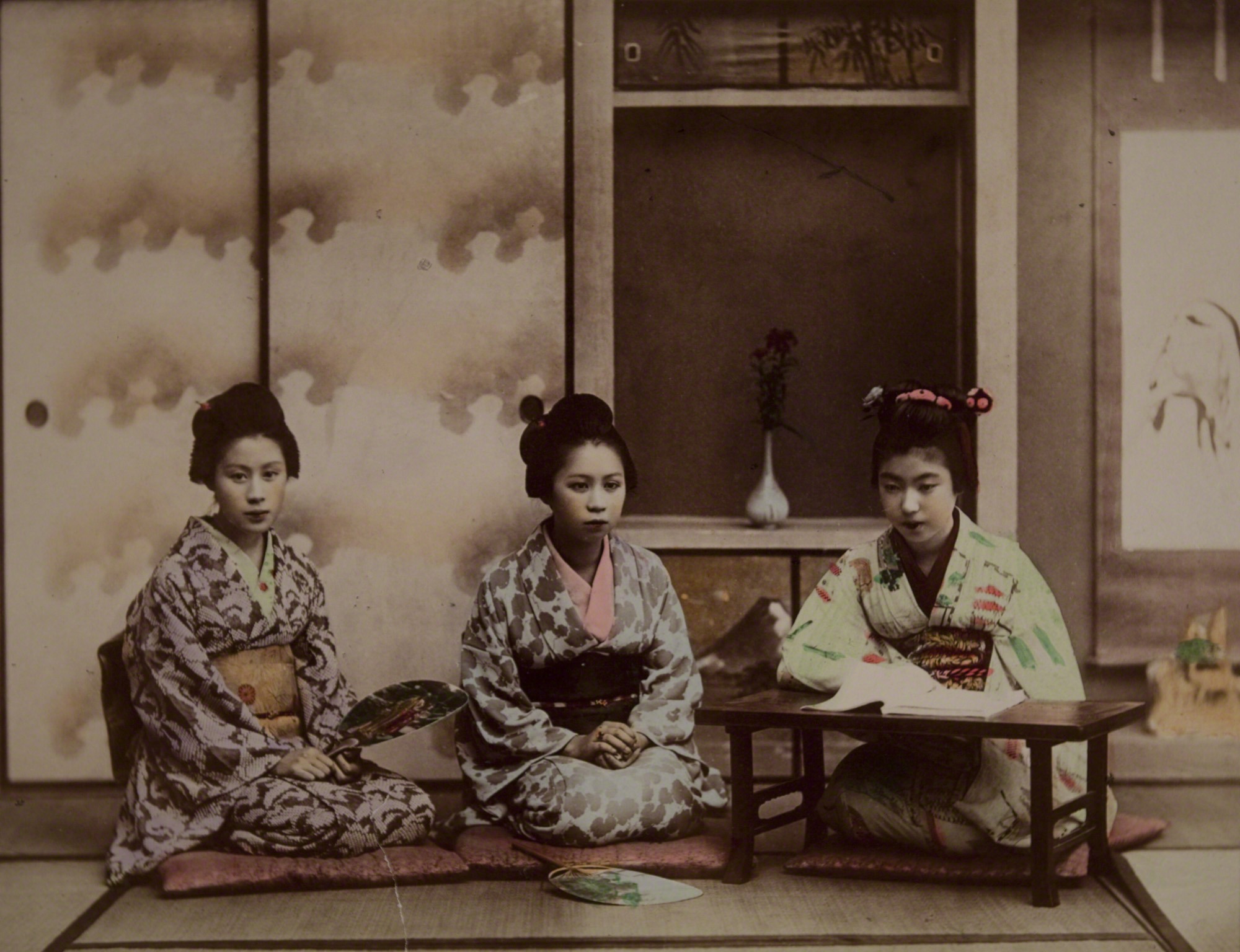
Citations aren’t bad. I promise. Formal and semi-formal citations are important for anime blogging. Luckily, you don’t have to have every comma and period perfect for blog citations. The main purpose of citations isn’t to protect against plagiarism. They help readers find your sources. Citation design maximizes the ability of readers, and you, to find information. Pasting links in a reference area isn’t enough. Links break. A full citation that includes the link, author, article title, and publisher increases your chances of finding the source again. If the link breaks, you can search for where the article has moved.
Ending a post with a bibliography increases your blog’s authority and increases reader trust. It shows how well you’ve done your homework. A good bibliography makes your article useful for readers who are researching for their own writing projects. This extra usefulness will make your blog memorable and increase the chances of a return visit. Every blogger loves regulars.
Anatomy of a Citation
There are many different types of formal citations. The most common citation methods in the United States are APA (American Psychological Association), MLA (Modern Language Association), and Chicago Style. Pick one and use it. Changing your citation style will confuse readers and defeat the point of using cites.
Every citation contains the same elements: author, title of work, title of publication (if it is part of a larger collection like a website or magazine), date published, and page number of the information. For example, APA uses the following format for periodicals:
Author, A. A., Author, B. B., & Author, C. C. (Year). Title of article. Title of Periodical, volume number (issue number), pages. http://dx.doi.org/xx.xxx/yyyyy
Periodicals like journals and magazines are the most complicated citations. Books in APA are simple:
Author, A. (Year). Book Title. Location:Publisher.
MLA and Chicago are different in order, but they have all the same parts. Citations are not bad at all. I cite websites using the APA periodical format, dropping page number, and DOI for the link.
You may be wondering what a DOI is. DOI stands for Digital Object Identifier. It is an unbreakable link. They appear most often like this: doi:10.1017/S0021911806001148 in a citation. If you paste 10.1017/S0021911806001148 into the search box at http://www.doi.org, it will take you directly to the article.
In-text Citing

Citations nestle at the end of the article, but the reader can’t know what bits of information came from which article. In-text citing fixes this. MLA and APA require parenthetical citing at the end of the sentence or paraphrase that contains the information. APA looks something like this:
During the Tokugawa Shogunate (1602-1868), women did not legally exist. Women could not own property and were subordinate to men in every way (Friedman, 1992).
The parentheses make parenthetical citing hard to read, but APA’s method provides a way to date the information at a glance. Linked footnotes increase readability and let the reader bounce to the citations and back. Pick a method and stay with it. Consistency in citation style, in-text citing, use of images, and posting schedule will make your blog stand out.
But how do you know when and what to cite? Direct quotes need to be cited but so do paraphrases. The rule to follow: cite anything you do not know. Even if you know the information, an in-text citation to a work that contains that information lends further authority. Be careful of paraphrases. Even if you cite your source, you can fall into plagiarism if you paraphrase too closely or too much of the original. Take notes and write from your notes instead of writing while you look at a source. This prevents you from paraphrasing too closely. This also helps you avoid writing in any voice but your own.
Quality of Sources

Not everything you read online is true. Shocking, isn’t it? But seriously, quality of online information is a problem. Even vetted academic journals can mislead by omitting information or containing bias. Wikipedia can contain good information, but the nature of Wikipedia leaves its information suspect. Anyone can edit its pages. An expert on cancer treatment and someone who just read a book on cancer have equal authority to edit pages. Antipathy toward expertise is a problem even Wikipedia’s co-founder Lawrence Sanger acknowledges (Levitin, 2014). Wikipedia is decent for a general idea about a topic as long as you keep in mind its potential to be inaccurate. Sadly, there is no way to know if you are reading an accurate article or not. Jimmy Wales, the founder of Wikipedia, states experts should have no more respect than newcomers to Wikipedia. Wikipedia is good for summaries and giving you an idea for what information you may need to search, but it cannot be your primary source of information. The quality of its information is suspect.
Academic databases like EBSCO (often available through your local library, university library, or state library) contains better information than Wikipedia, but you will have to judge the quality of the information. Bias, omission, status quo, and author intentions impact information. The act of writing involves selection and omission. Articles cannot contain every detail on a topic. Because of this, bias can creep into this process despite best intentions. The goals of the writer shifts information as well. Experts will write to retain the status quo for their profession. This determines how information is presented. Intention affects presentation and what information is included. Even an expert is not aware of all information in her field.
There are five questions I use to help me determine the quality of a resource. Sometimes the answers are in the article. Other times you can only make an educated guess based on what you read.
- What is the goal of the author?
- What bias do I see?
- What information is missing?
- Are sources cited?
- Are the sources high quality? Do they come from academic journals?
If you write editorials about Japanese culture or the cinematography of a certain anime, the quality of your sources matters. Bloggers have reputations to consider, especially in the aniblogging community. Misleading and wrong information will hurt your reputation. Readers are quick to correct errors, but too many errors will reflect negatively on you. Good sources improve your credibility. As a blogger you also have the responsibility toward your readers to provide the best information you can. As a blogger, you need to also own up to your mistakes. I’m often wrong!
Good places to look for information include news websites, library databases, The Internet Archive, Project Gutenberg, Google Books, Google Scholar, and university websites. Be picky and look for at least two different sources to verify the information when working with websites.
Library databases work differently from Internet search engines. One of the best methods to find information is to start with a keyword search. Select one or two articles and look at the Subject or Descriptor fields. Search again using those words, and you will see better results. Subjects use controlled vocabulary that is hard to guess. For example, a subject heading for anime may be “Japanese Animation” or “Animation – Japan” instead of “anime.”
Libel
Copyright doesn’t allow you to post libel. Libel involves publishing false statements about a person that damages their reputation. You can be held liable if a show of malice can be proven in court (Gertz v. Robert Welch, Inc. 418 U.S. 323) Personal attacks have no place on an anime blog, whether toward anime writers, mangaka, or fellow bloggers. Criticism doesn’t intend to tear down. It points out flaws to help people improve. Before posting anything, give yourself a few days distance. If you are writing a rant (and why are you?) this will help you avoid the heat of the moment. Libel can happen in such a moment with profound consequences.
Don’t let any of this deter you from getting into anime blogging. Blogging isn’t as big as video. People don’t want to read anymore. And this offers the largest challenge for developing your blog. It takes time–sometimes, years. But keep at it.
References
Levitin, D., The Organized Mind, New York: Penguin Group, 2014.
University of Chicago Press. The Chicago Manual of Style, 16th ed, Chicago: University of Chicago Press, 2010.



